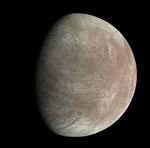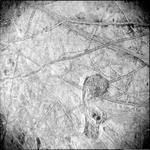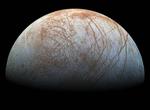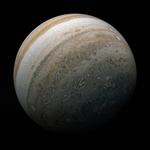Other

“Imagery from the solar-powered spacecraft shows some intriguing features on the ice-encased Jovian moon. Images from the JunoCam visible-light camera aboard NASA’s Juno spacecraft supports the theory that the icy crust at the north and south poles of Jupiter …

“The spinning, solar-powered spacecraft will take another look of the fiery Jovian moon on July 30. When NASA’s Juno mission flies by Jupiter’s fiery moon Io on Sunday, July 30, the spacecraft will be making its closest approach …

“The gas giant orbiter has flown over 510 million miles and also documented close encounters with three of Jupiter’s four largest moons. NASA’s Juno spacecraft will fly past Jupiter’s volcanic moon Io on Tuesday, May 16, and …

“ESA’s Jupiter Icy Moons Explorer (Juice) lifted off on an Ariane 5 rocket from Europe’s Spaceport in French Guiana at 14:14 CEST on 14 April. The successful launch marks the beginning of an ambitious voyage to uncover …

“On April 13 2023, the Jupiter Icy Moons Explorer (JUICE) mission is scheduled to launch from the European Spaceport in Kourou, French Guiana. The ESA-led mission is packed with eleven science instruments for exploring the Jovian ice-covered moons, four …

“Observations from the spacecraft’s pass of the moon provided the first close-up in over two decades of this ocean world, resulting in remarkable imagery and unique science. The highest-resolution photo NASA’s Juno mission has ever taken of a …
“Observations from the spacecraft’s pass of the moon provided the first close-up in over two decades of this ocean world, resulting in remarkable imagery and unique science. The first picture NASA’s Juno spacecraft took as it flew by …

“As the spacecraft makes a close approach of the moon, it is expected to provide valuable science – and remarkable imagery – for NASA’s upcoming Europa Clipper mission. On Thursday, Sept. 29, at 2:36 a.m. PDT (5:36 a …

“Parallel ice ridges, a common feature on Jupiter’s moon Europa, are found on Greenland’s ice sheet – and could bode well for Europa’s potential habitability. Parallel ice ridges in Greenland bear a striking resemblance to ridges on Jupiter …

“The planet’s auroras are known to produce low-energy X-ray light. A new study finally reveals higher-frequency X-rays and explains why they eluded another mission 30 years ago. Scientists have been studying Jupiter up close since the 1970s, but the …

